Mad Hedge Biotech and Healthcare Letter
April 25, 2024
Fiat Lux
Featured Trade:
(RACING TO SWAP A GOLDEN GOOSE FOR A NEW FLOCK)
(MRK), (NVO), (LLY), (JNJ), (ABBV), (PFE)
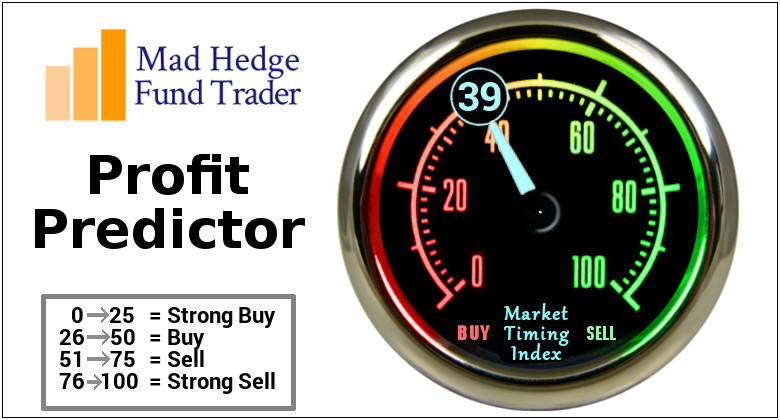
Mad Hedge Biotech and Healthcare Letter
April 25, 2024
Fiat Lux
Featured Trade:
(RACING TO SWAP A GOLDEN GOOSE FOR A NEW FLOCK)
(MRK), (NVO), (LLY), (JNJ), (ABBV), (PFE)

Big pharma usually makes investors smile - fat profits, juicy dividends, and stocks that crush the market.
Lately, though, some of these giants are looking more like grumpy old men. Sure, there are exceptions like Novo Nordisk (NVO) and Eli Lilly (LLY) printing money with their obesity blockbusters.
But what about the rest? Even with Washington breathing down their necks, patent cliffs, and a shaky economy, you'd think these drug titans wouldn't be lagging the market, right? Wrong.
Check out the "Big Eight" top dogs - Johnson & Johnson (JNJ), Merck (MRK), AbbVie (ABBV), Pfizer (PFE), and the rest. Only a few have really delivered the goods in the past five years. AbbVie and Merck have been alright, but the others? They make me want to take a nap.
Now, I'm not saying give up on pharma entirely - there's still money to be made. But you've got to do your homework. Today, let's take a look at Merck.
They raked in $60.1 billion in 2023, making them a heavy hitter. But without their COVID cash machine Lagevrio, growth is...less impressive. Still up, but not setting the world on fire.
The real story is spending - Merck went on a spree, burning through cash on R&D. Why? Their golden goose Keytruda, that $25 billion cancer blockbuster, is facing generic competition soon.
Merck isn't just sitting around waiting for the Keytruda patent cliff either. They're furiously throwing money at new drugs, acquisitions, cancer, heart disease, immune disorders - hoping to find the next Keytruda before the current one fades away. It's like an aging rockstar desperately trying to write another big hit.
But let's be real, finding billion-dollar breakthroughs is a gamble, even for giants like Merck. They've got potential in the pipeline for sure, but it's a long road from the lab to pharmacy shelves. Plenty of drugs flame out along the way.
Looking back, 2023 wasn't a victory parade for Merck. It was more like a mad dash to spend their way out of the looming Keytruda patent cliff. But hey, sometimes you've gotta break a few eggs to make an omelet, right?
Speaking of potential winners, let's talk about those newly approved lung drugs – sotatercept could be a major player.
Merck's vaccine department is looking strong too, with potential blockbusters targeting lung infections and RSV in the pipeline.
Of course, it hasn't all been smooth sailing. That new cough drug, gefapixant, getting rejected by the FDA again? Merck took a hit on that. Still, this biotech’s not giving up. This is a company buying time to build up a whole new arsenal, and the Keytruda cliff might hurt, but they'll come out swinging.
So, let’s forget about that 2023 earnings dip. Merck's forecasting a serious jump in 2024 profits as they dial back the crazy spending. Yes, their balance sheet took a hit, but look at what they're building. They're hunting big deals to bolster that pipeline, and that's a good thing in my book.
Speaking of big moves, Merck's been on a shopping spree. Wall Street might get nervous if they drop another bombshell, but I trust their judgment. These aren't just random buys; this is how they protect their future cash flows. Besides, any short-term drama from a big deal could be a sweet buying opportunity.
And while Merck’s still figuring out which one could be the next big thing, the true star of the show, until that patent cliff arrives, is still Keytruda.
That beast is still growing and could keep going strong for years, especially in early-stage treatments. Plus, that new subcutaneous version of this blockbuster treatment? Talk about extending the gravy train well past the generic competition.
Let's also check out the other horses in this race: sotatercept's early sales numbers, a potential FDA approval for that HER2 drug, the saga of gefapixant's third shot (or not), and the cash potential of V116 and Welireg. Not to mention, juicy updates on that Moderna (MRNA) partnership…Merck’s next months could be packed with surprises.
As for this company’s dividend? Decent track record, but don't expect fireworks after the recent hike. As for buybacks, Merck seems to have...other priorities right now. Those profits are pouring straight into the growth pipeline.
The bottom line: While some of Big Pharma looks pale lately, Merck is still bringing it, share price gains and all. Sure, that gefapixant rejection stings. But Keytruda keeps roaring, and Merck's pipeline is buzzing with potential. I'm not sweating earnings.
Merck's got contingencies lined up for the Keytruda patent apocalypse - new drugs, deals, maybe even extending Keytruda itself. They're playing for the long game here. I suggest you buy the dip.
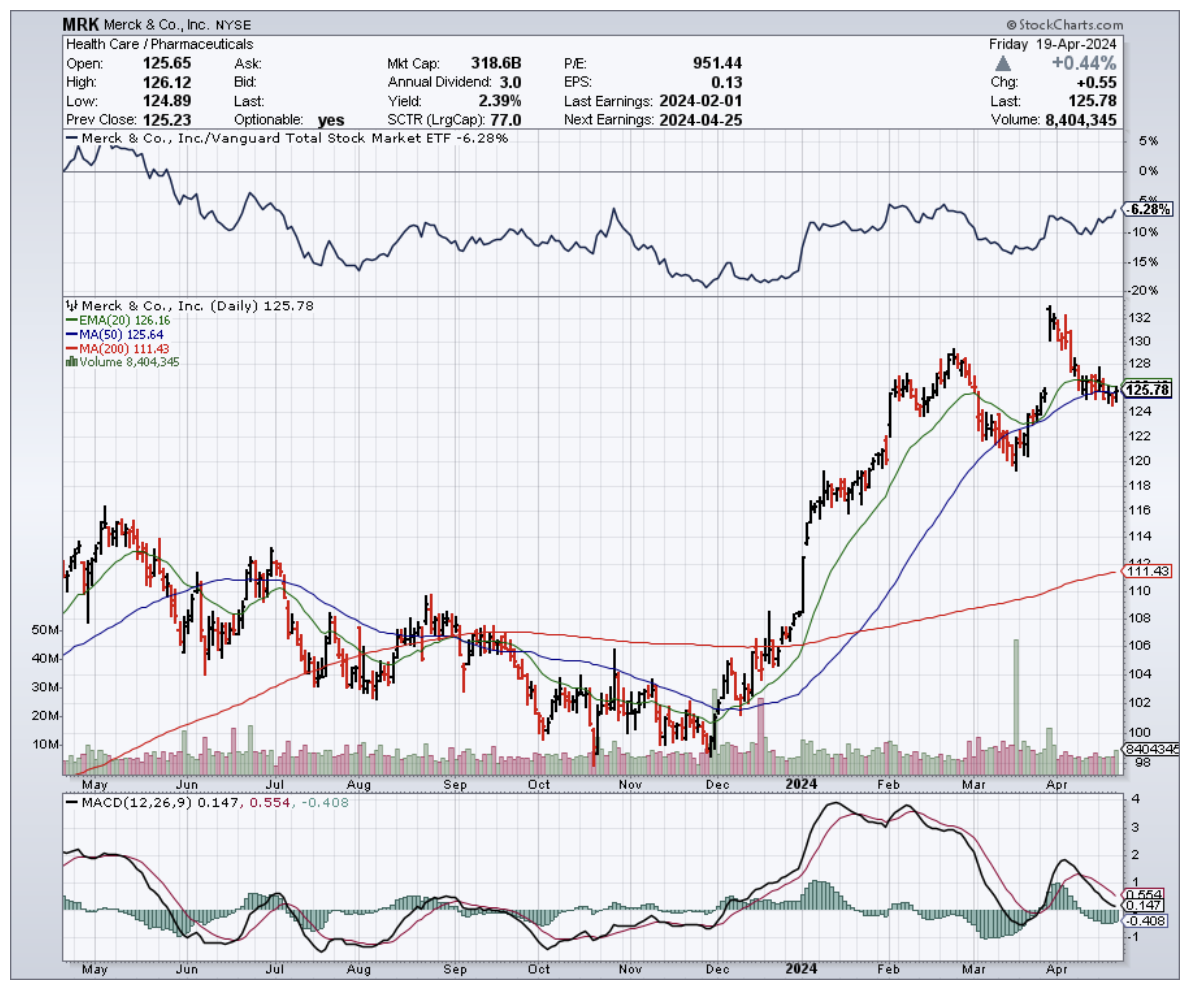
Mad Hedge Biotech and Healthcare Letter
April 2, 2024
Fiat Lux
Featured Trade:
(BREATHE EASY)
(MRK), (JNJ)
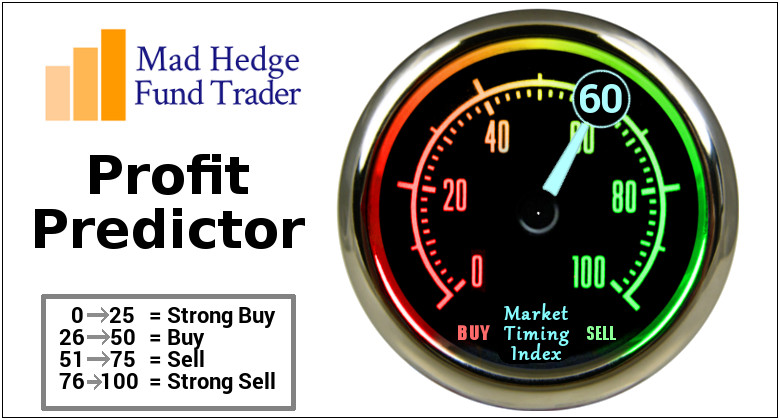
It looks like Merck (MRK) just scored a major touchdown in the drug wars, which might make the looming Keytruda patent expiration sting a little less.
Remember when Merck dropped $11.5 billion on Acceleron back in 2021 to get their hands on Winrevair (then known as Sotatercept)? That was a seriously gutsy move to soften the blow when their Keytruda goldmine started drying up.
Talk about a gamble. Acceleron didn't even have their Phase 3 trial results in hand yet. A lot of people were scratching their heads at the time, thinking maybe Merck had lost their marbles.
But fast-forward to today, those Phase 3 results drop, and here we are. Turns out Merck knows a thing or two about playing the long game.
Their new drug, Winrevair, which just got the FDA thumbs up for a rare heart condition, tackles a serious heart condition called pulmonary arterial hypertension (PAH).
PAH is no joke – it basically strangles your lungs and heart, drastically shortening your lifespan. Unlike those old PAH drugs like Uptravi from Johnson & Johnson (JNJ), Winrevair's got a completely different way of fighting back. That could be huge for patients who aren't getting enough relief with current options.
Winrevair targets that messed-up TGF-beta pathway, trying to reverse some of the damage caused by this disease.
Although PAH might be rare, affecting an estimated 15 to 50 people per million in the United States and Europe, those who suffer from it are often desperate for effective treatments.
The global PAH market is already worth a staggering $7.3 billion annually and is projected to hit $12.18 billion by 2032.
Merck's timing couldn't be better. Not only did Winrevair sail through approval, but it also dodged all those nasty black box warnings and extra safety hoops some drugs have to jump through.
Translation: this drug is about to hit the market full speed ahead.
Given the promise of this new drug, Merck must be popping champagne corks right about now. No restrictions mean doctors can prescribe this stuff far and wide – that's a probable goldmine, especially for a serious disease like PAH.
Let's not forget why all this matters. Keytruda was a $25 billion cash cow for Merck in 2023, making up a huge chunk of their revenue. Those cheap knock-offs are coming in 2028, ready to eat into that sweet slice of the pie.
But thanks to Wenrevair, that future doesn’t seem too daunting anymore.
Merck has set a price of $14,000 per vial for Winrevair, translating to an average annual cost of $212,000 per patient. While this may seem steep, it reflects the drug's potential to improve the lives of PAH sufferers and secure Merck's financial future.
Actually, analysts are predicting peak sales of a mind-boggling $11 billion – maybe even $8 billion at the low end. Either way, that's a massive lifeline for Merck as they brace for the dreaded Keytruda patent cliff in 2028.
In fact, Winrevair could pull in $500 million this year alone, jumping to $3 billion by 2027. Talk about a growth spurt.
With Winrevair set to change the PAH treatment landscape, investors can breathe easy knowing that Merck has a new ace up its sleeve.
After all, this drug is practically guaranteed to be another blockbuster, which is great news considering the looming Keytruda patent expiration in 2028.
Merck's audacious $11 billion bet on Acceleron seems to be paying off – Winrevair could easily bring in $30 billion over its lifespan.
But let's not get too carried away – Winrevair won't single-handedly save Merck in the long run. They'll need more hits to keep outperforming the competition.
For now, Merck seems like a decent hold. It's got reasonable growth potential, and you might even want to nab some shares if the price dips.
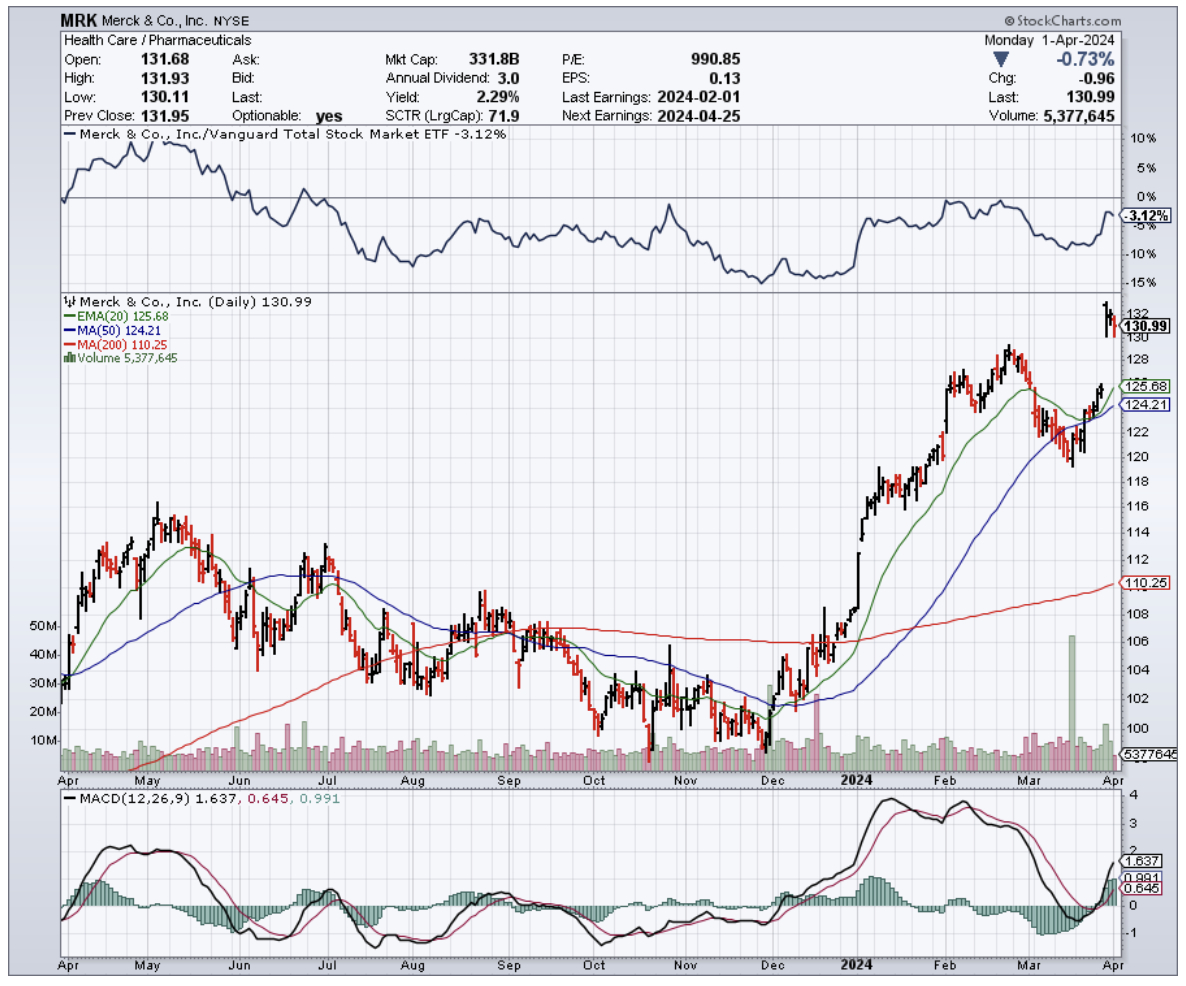
Mad Hedge Biotech and Healthcare Letter
February 27, 2024
Fiat Lux
Featured Trade:
(CASHING IN ON CURES)
(LLY), (NVO), (JNJ), (PFE), (MRK), (BIIB)
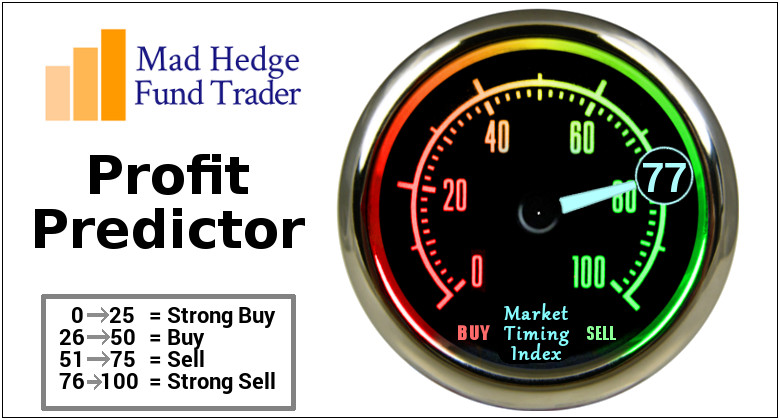
In the biotechnology and healthcare industry, reaching a $1 trillion market cap is akin to scaling Mount Everest without oxygen. Yet, Eli Lilly (LLY) has emerged as an unexpected contender, catching the investing world’s attention by not just climbing the mountain but being on the verge of planting its flag at the summit.
A year ago, if you'd whispered in my ear that Eli Lilly's stock was about to skyrocket nearly 140%, I might have choked on my coffee. But here we are, and the buzz isn't just about the rocket ride — it's whether Eli Lilly can be the first biopharma behemoth to hit the $1 trillion market cap. Wild, right?
So, what's cooking at Eli Lilly that's got everyone so revved up? Well, they've got a couple of aces up their sleeve.
Sure, they've been making waves with Verzenio for breast cancer and Jardiance for diabetes, but the real game-changer? Tirzepatide, sold under their brand name Mounjaro for type 2 diabetes and is now strutting the stage as Zepbound for weight loss. This isn't just any old drug; it's the blockbuster that's got everyone from Wall Street to Main Street talking.
But what makes tirzepatide so darn special? It's the first of its kind, a dual GLP-1/GIP agonist, making it a heavyweight champion in the fight against obesity. With sales already blasting past the $5 billion mark in record time, it's like watching a rocket take off without any signs of slowing down.
Now, I know what you're thinking. "But hey, aren't there other big fish in the sea?" Sure, Johnson & Johnson (JNJ), Pfizer (PFE), and Merck (MRK) are doing their thing, but next to Eli Lilly's recent performance, they're looking a bit like they're running in slow motion.
And while Novo Nordisk (NVO) has been gaining traction in the diabetes market with its own version of the treatment, Eli Lilly’s tirzepatide is in a league of its own. In fact, this drug is projected to become the top-selling treatment in history, with the potential to rake in sales north of $25 billion.
For context, AbbVie (ABBV) Humira had an annual record of $21.2 billion, and that’s already the recorded highest-selling therapy in history. But, the road to hitting these goals demands many more new indications.
That’s why it comes as no surprise that tirzepatide is eyeing a new target: metabolic dysfunction-associated steatohepatitis, or MASH for short. It's a fancy way of saying "a really bad liver problem," and it's a growing issue globally.
Beyond tirzepatide, Eli Lilly's expanding in a few other markets. Alzheimer's, for one, where their potential therapy, donanemab, is making waves and presents a potential competitor to Biogen’s (BIIB) Leqembi.
And let's not overlook their recent wins with cancer medicine Jaypirca and ulcerative colitis therapy Omvoh. It's like Eli Lilly's hitting bingo on every card.
With all these in mind, can Eli Lilly truly reach that $1 trillion valuation? With their current market cap already north of $715 billion, it looks like the company is ready to take home the title. Assuming a modest compound annual growth rate of about 7%, that trillion-dollar dream could become reality quicker than you can say "biopharma giant."
As investors, industry watchers, and, frankly, anyone with a pulse on the future of medicine keep their eyes glued to this unfolding story, the message is clear: Eli Lilly is not just about the numbers. It's about setting new benchmarks, pushing boundaries, and cashing in on cures in the most spectacular way possible.
So, if you're wondering where the smart money is heading in the biotechnology arena, following Eli Lilly's trail might just lead you to a treasure trove of opportunities. I suggest you buy the dip.
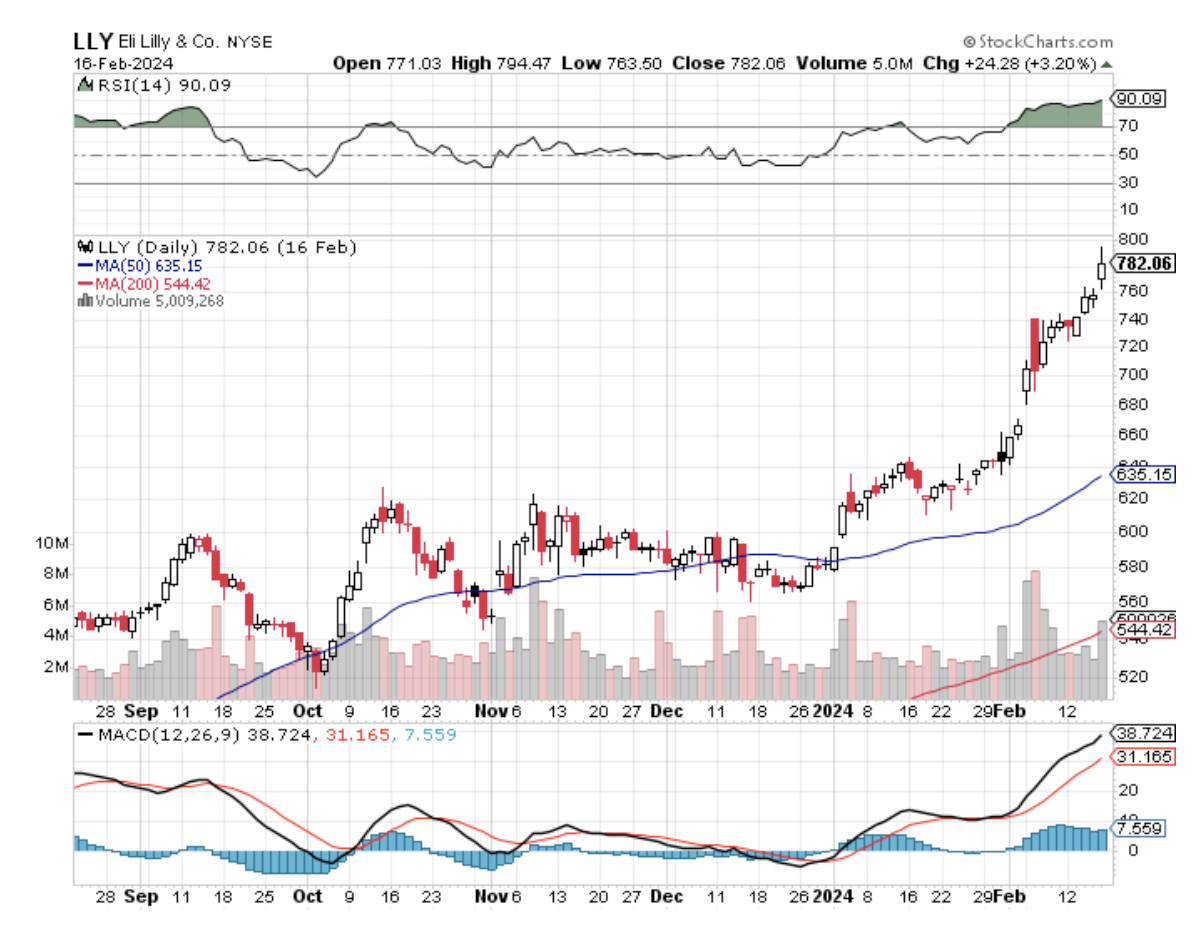
Mad Hedge Biotech and Healthcare Letter
January 30, 2024
Fiat Lux
Featured Trade:
(BRAIN GAINS)
(BIIB), (ESALY) (LLY), (REGN), (ALNY), (MRK), (AMGN), (PFE), (BMY)
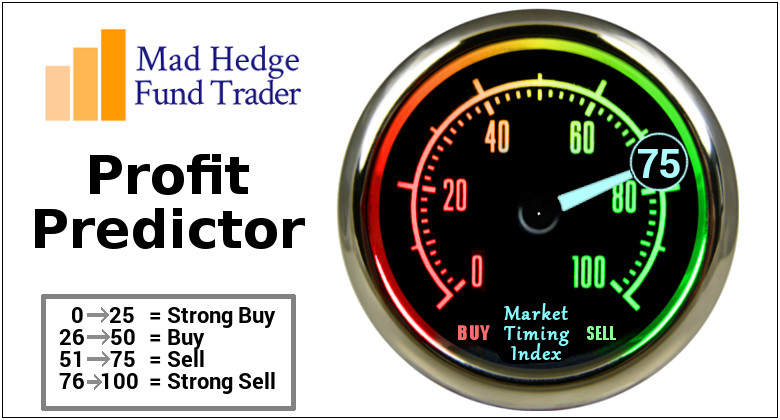
Let's talk about a golden opportunity knocking at our doors – the booming market of Alzheimer's disease treatments in biopharma. We're not just talking about a small uptick here. With a slew of new meds on the horizon, this market is gearing up for some serious growth, and you might want to grab a piece of this pie.
The dominant name on our radar is Biogen (BIIB), ticking at $260 per share with a market cap that's flirting with $39 billion.
Now, with a solid $10 billion in sales and trading at a nifty 16 times its 2024 estimated earnings, Biogen's got some serious mojo. I've been eyeing it since last year, but boy, have things changed since then.
A critical game-changer was Chris Viehbacher, the new CEO since November 2022. He's already played a couple of aces – slicing $800 million in costs (which, by the way, could pump up earnings by $5 a share by 2025) and wrapping up the acquisition of Reata Pharmaceuticals in September 2023.
This new addition to Biogen’s portfolio has a hot ticket item, Skyclarys, for treating Friedreich’s ataxia. It's a rare find, but it could add a cool $5 per share in earnings in a few years.
But the most exciting name in Biogen’s arsenal is Leqembi, the company’s Alzheimer’s treatment. They're splitting the pot with Eisai (ESALY), and this drug is a little like turning back the clock on cognitive decline – think a two-year rewind button.
The big bucks talk here: we're eyeballing $2 billion in revenue by 2028 and maybe a whopping $4 billion by 2033. And hey, there might even be more where that came from.
Let's chew on a few things here. Biogen has the potential to snag a 60% market share against Eli Lilly’s (LLY) donanemab – the only worthy opponent in the market so far. And given Leqembi's safety creds, this might be playing it safe.
Aside from Eli Lilly, there’s Roche (RHHBY), with candidates in Phase 2 and Phase 1 trials, but they're not quite hitting the jackpot yet. As for other competitors in the space like Regeneron (REGN) and Alnylam (ALNY)? Well, they're cooking up something different in Phase 1, but it's a bit early to call.
Meanwhile, Biogen's got another trick – a home-use version of Leqembi coming this fall. And get this: doctors are buzzing about nipping Alzheimer’s in the bud, way before it crashes the party. Imagine getting a jab of Leqembi as part of your routine check-up when you're only 50. If this works, then we could be kissing Alzheimer’s goodbye by 2040.
For the longest time, Biogen was like that one-hit wonder with its multiple sclerosis treatments. But now, they're swinging for the fences with the largest unmet health need out there. If Leqembi hits it big, and I mean really big, we could be talking about sales far beyond that $4 billion mark by 2033.
But let's not get ahead of ourselves. The big pharma world is about to hit a few speed bumps with a wave of patent cliffs from 2025 to 2029. That’s a headache for the likes of Merck (MRK), Amgen (AMGN), Pfizer (PFE), and Bristol Myers Squibb (BMY).
Biogen, though, is sitting pretty with two growth products and a pipeline that’s got pizzazz. Plus, they're a hot catch for any big pharma looking for a dance partner without stepping on regulatory toes.
As we roll into the next decade, keep your eyes peeled for investment opportunities popping up like daisies. And don't feel like you've got to jump on the first bandwagon that rolls by. This market's just stretching its legs, and today's champs might just be tomorrow's old news.
So, what's the smart play here? Spread your bets across a few horses in the Alzheimer's race, and make sure they're not one-trick ponies.
Eli Lilly, for instance, is more than just an Alzheimer's bet – they're making waves in diabetes and soon, obesity treatments. Biogen, despite its Alzheimer's experience, is a bit of a gamble, especially after its first drug's rocky start.
Remember, investing in Alzheimer's treatments now is like catching the early wave – it's riskier, sure, but the potential for a big payoff is there. This is an emerging market, and it's revving up for an exciting ride. I suggest you add these names to your watchlist.
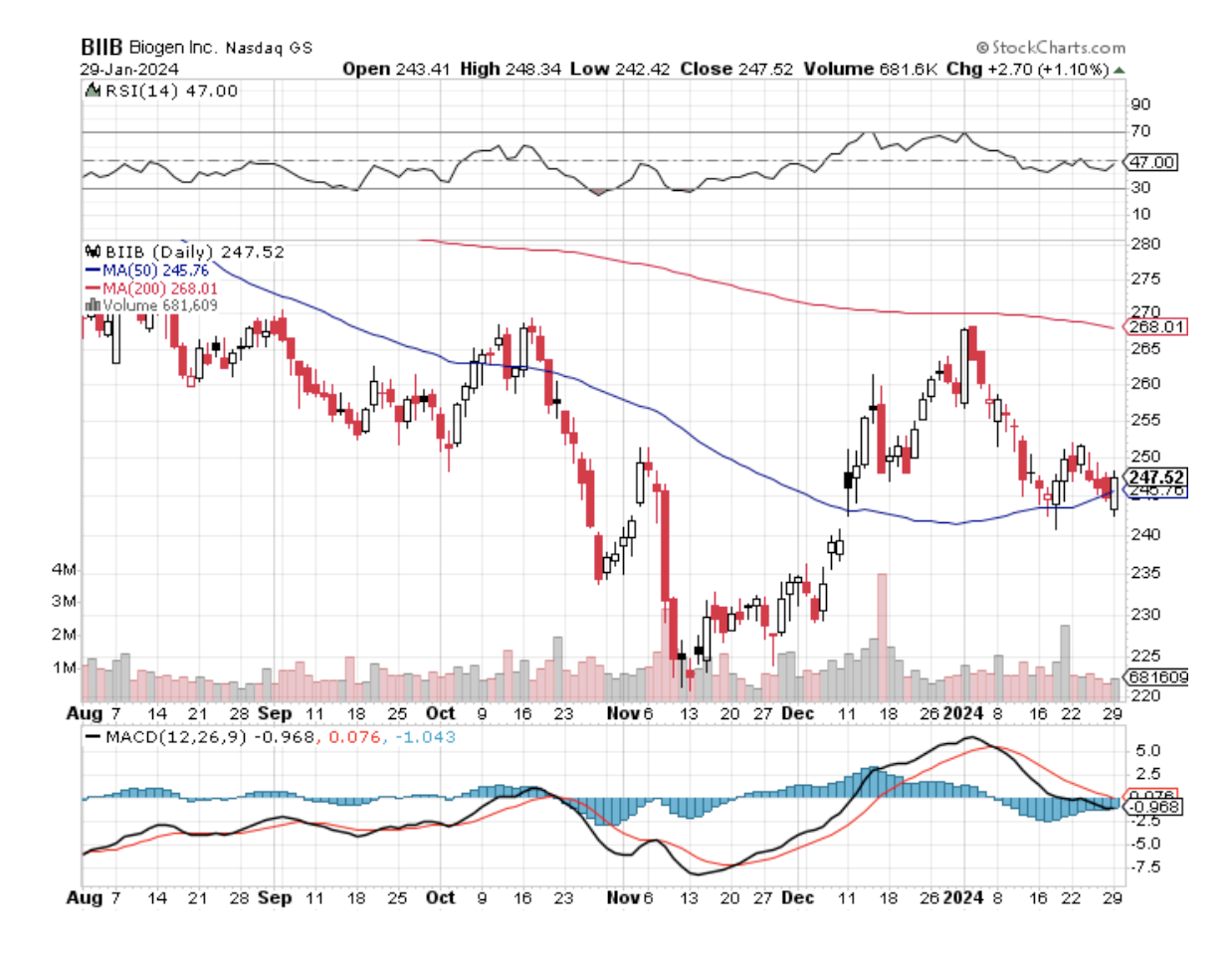
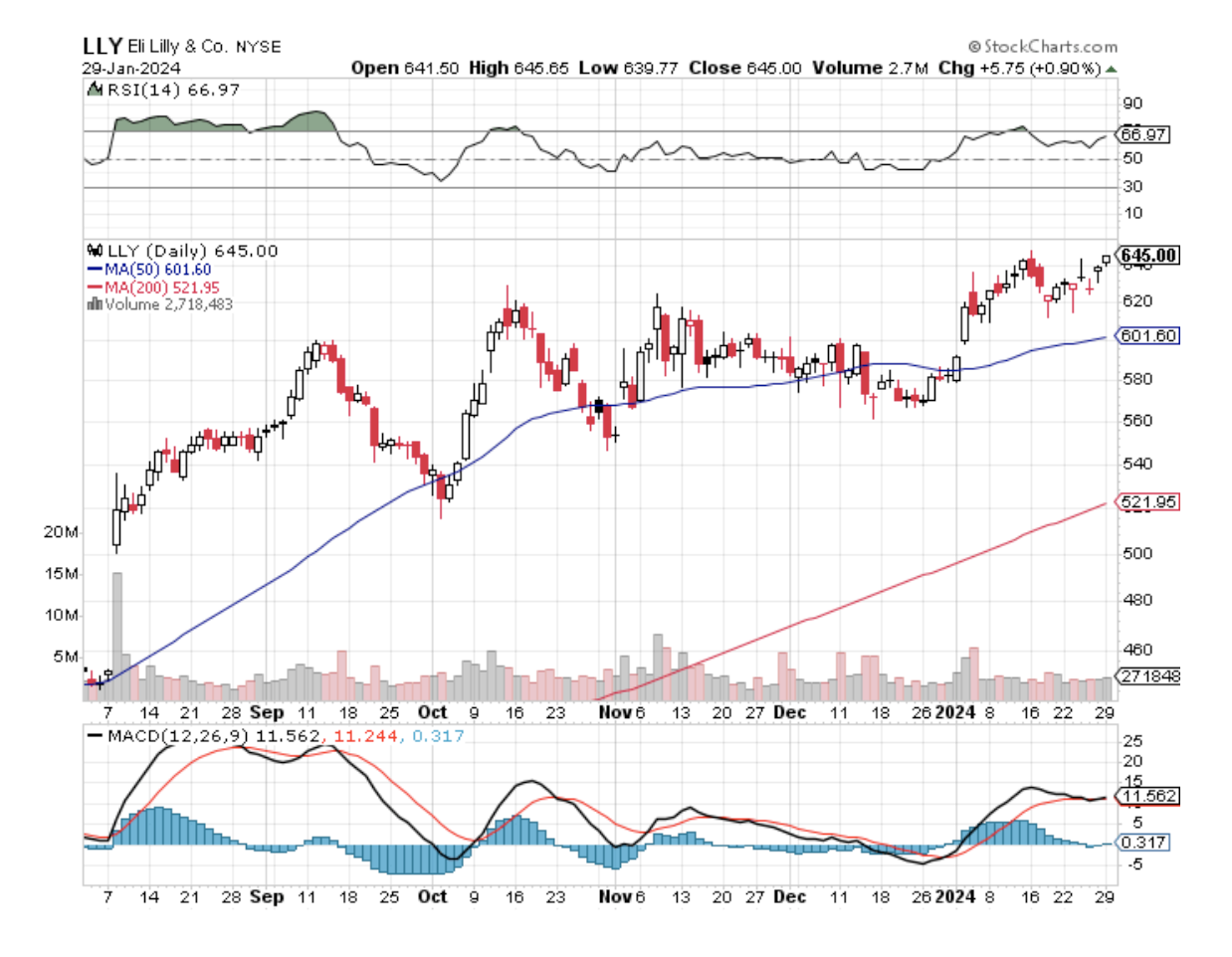
Mad Hedge Biotech and Healthcare Letter
January 16, 2024
Fiat Lux
Featured Trade:
(PHARMA GIANTS HUNTING FOR THE NEXT BIG THING)
(IMCR), (SNDX), (BPMC), (MRK), (JNJ), (HARP), (AMAM), (MDGL), (VKTX)

Alright, let's dive back into the biotech pool – and no, it's not the kind where you just dip your toes. We're talking about a full-blown belly flop into the deep end of the stock market.
Since October 2023, biotech stocks have been playing a game of limbo, asking themselves, "How low can you go?" But just when they hit two-thirds below their Covid pandemic peak, Big Pharma came to the rescue like knights in shining armor (or should I say, lab coats?).
In an earlier letter, I talked about J.P. Morgan’s annual healthcare conference, essentially the Super Bowl for healthcare geeks. The buzz? Merck (MRK) grabs Harpoon Therapeutics (HARP) for $680 million – a move as sharp as, well, a harpoon.
Not to be outdone, Johnson & Johnson (JNJ) scoops up Ambrx Biopharma (AMAM) for a cool $2 billion. Talk about shopping sprees!
But wait, there’s more. Looking into the rest of the biotech companies in the market today, I can spot a few potential biotech Cinderellas, waiting for their Big Pharma prince. And no, I don't have a crystal ball, but I do have some educated guesses.
First up, let’s chat about Immunocore Holdings (IMCR). These British wizards have been turning heads since Kimmtrak, their first drug for a rare eye cancer, got the green light in 2022.
This biotech is a $1.9 billion David amidst the Goliaths, with a therapy that’s like whispering secret orders to the patient's immune system – "Psst, go beat up that tumor, will you?" And guess what? It listens. This approach isn’t just for show; it’s bumping up survival rates, and that’s a big deal.
Impressively, Immunocore isn't just a one-hit wonder. Kimmtrak, their star player, is not your average Joe of the T-cell receptor (TCR) immunotherapy world. It's more like the valedictorian – first of its kind to get the thumbs up in a who’s who of countries, including the United States, Canada, the E.U., the U.K., and Australia.
For a small-cap player, that’s like winning the World Cup in its rookie year. And with no rivals for Kimmtrak’s indication, it’s like they’ve got the whole playground to themselves.
Next, let’s take a trip to Boston’s backyard – Syndax Pharmaceuticals (SNDX). They’re nearly doubling their value faster than you can say “biotech boom,” thanks to some promising drugs for leukemia and transplant complications.
With a market cap near $1.7 billion and potential FDA nods on the horizon, they're like the biotech version of a sleeper hit.
Checking out the long-term plans of Syndax, they've got a lineup of compounds that are like a biotech fan's dream team, eyeing not one, but two FDA green lights in 2024. They're buddying up with Incyte (INCY) on these compounds, and let me tell you, the scientific world is giving them the thumbs up. And to keep the lights on and the science humming, they've tucked away a cool $200 million from a recent capital raise.
But that’s not all. Since the market hit rock bottom in late October, Syndax's stock has been shooting up like a rocket, a whopping 75% jump. It’s like they've been hitting the gym hard. Bank of America's bullish call on the stock? That was the protein shake.
Now, I'm all for a good success story, but let’s not get ahead of ourselves. I'm keeping an eagle eye on this one, waiting for the perfect moment when the shares might take a little breather, maybe dip into the mid-teens. That's when I’ll swoop in, snagging a slice of SNDX, especially with those FDA approvals on the horizon. After all, these deals are all about timing.
And who could ignore Blueprint Medicines (BPMC)? Straight out of Cambridge, Massachusetts, these folks have a drug targeting certain white blood cell cancers.
These folks aren't your average biopharma company; they're more like the MIT of medicine, crafting precision treatments that home in on the genetic bad guys causing cancer and blood disorders. Their lineup? A dynamic duo of Ayvakit for systemic mastocytosis and Gavreto for those tricky RET-cancers, plus four more contenders in clinical trials, all ready to rumble in the biotech arena.
Blueprint's story started in 2011. They then hit the public scene in 2015, where they raised a whopping $154.8 million at their IPO - talk about making an entrance.
Fast forward to today, and their stock is hovering around $85.00 a pop, boasting a market cap of $5.4 billion – that's billion with a “B.”
What’s their secret sauce, you ask? These geniuses have a discovery platform that's like a GPS for kinases, the sneaky culprits behind many diseases. Their method? Create compounds that are like guided missiles, targeting these kinases with precision. The result? Two FDA approvals, and probably a few high fives in the lab.
But hey, it’s not all about cancer. The weight-loss drug arena is heating up, too. Madrigal Pharmaceuticals (MDGL) and Viking Therapeutics (VKTX) are the names to drop here. Madrigal’s eyeing FDA approval for a liver treatment, while Viking’s showing some early promise in the weight-loss game.
So, there you have it – the biotech scene is sizzling, and these companies are the ones turning up the heat. My two cents? Keep these companies under your watchful eye. You never know, one of them might just be the golden ticket in this dazzling biotech arena.
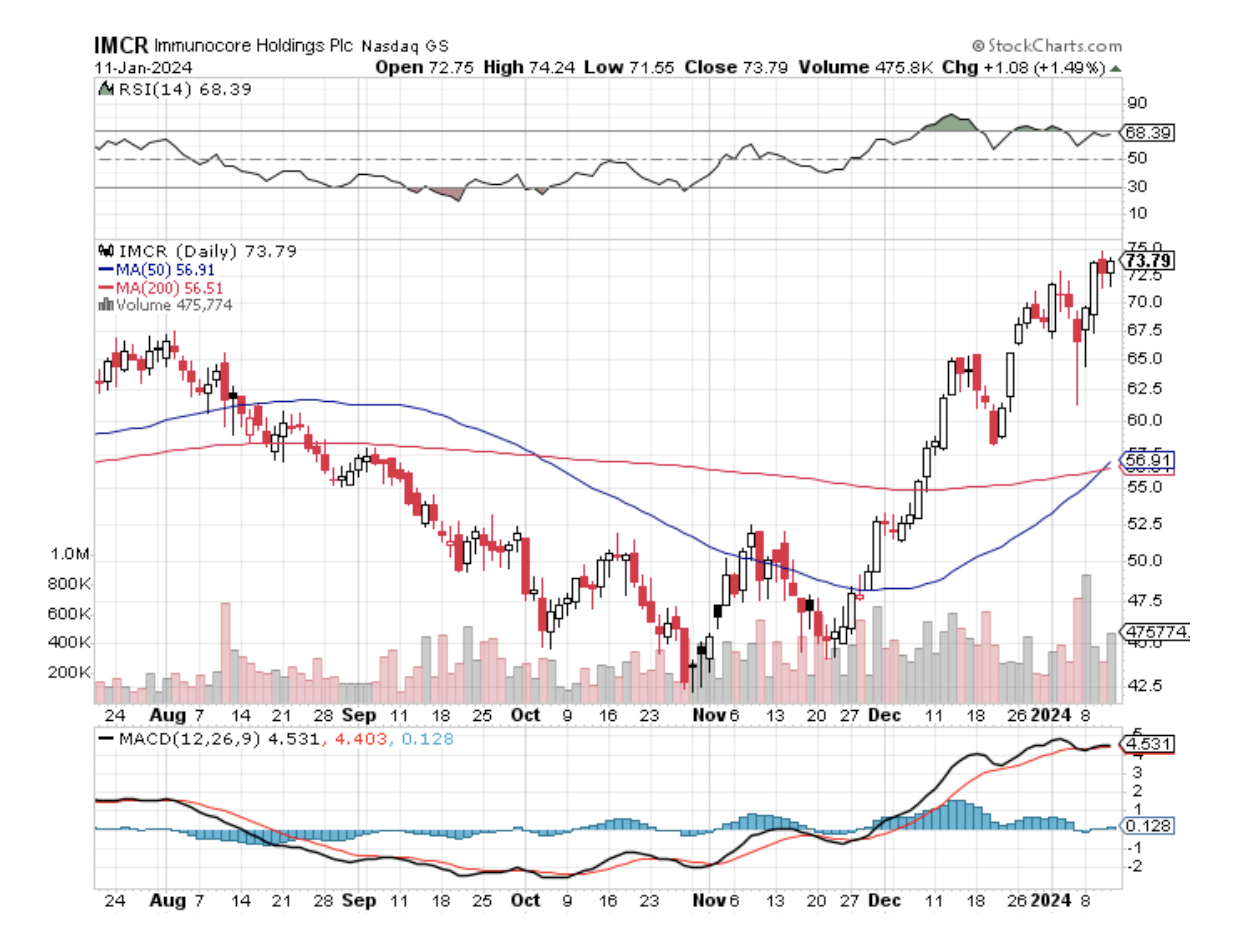
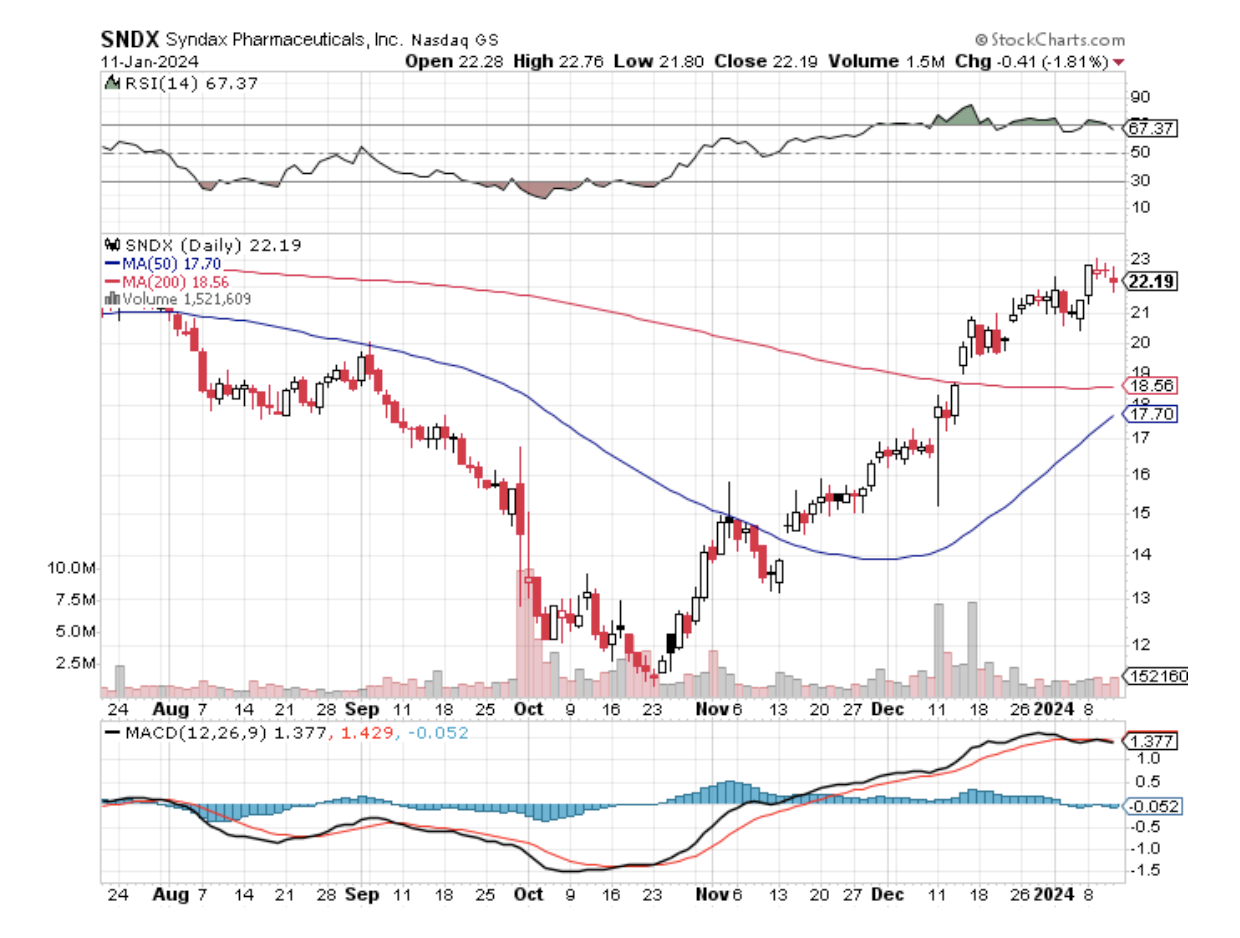
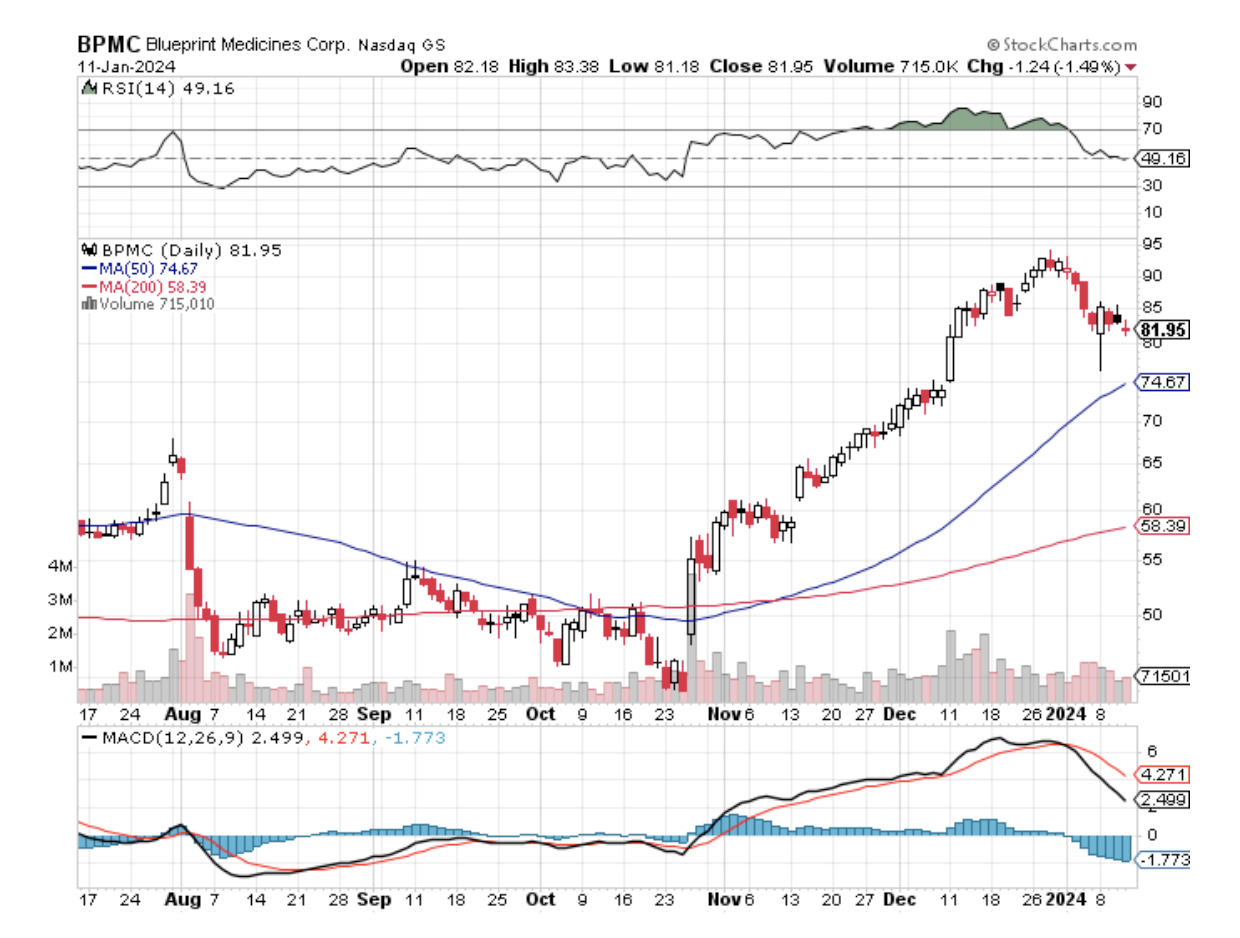
Legal Disclaimer
There is a very high degree of risk involved in trading. Past results are not indicative of future returns. MadHedgeFundTrader.com and all individuals affiliated with this site assume no responsibilities for your trading and investment results. The indicators, strategies, columns, articles and all other features are for educational purposes only and should not be construed as investment advice. Information for futures trading observations are obtained from sources believed to be reliable, but we do not warrant its completeness or accuracy, or warrant any results from the use of the information. Your use of the trading observations is entirely at your own risk and it is your sole responsibility to evaluate the accuracy, completeness and usefulness of the information. You must assess the risk of any trade with your broker and make your own independent decisions regarding any securities mentioned herein. Affiliates of MadHedgeFundTrader.com may have a position or effect transactions in the securities described herein (or options thereon) and/or otherwise employ trading strategies that may be consistent or inconsistent with the provided strategies.
This site uses cookies. By continuing to browse the site, you are agreeing to our use of cookies.
OKLearn moreWe may request cookies to be set on your device. We use cookies to let us know when you visit our websites, how you interact with us, to enrich your user experience, and to customize your relationship with our website.
Click on the different category headings to find out more. You can also change some of your preferences. Note that blocking some types of cookies may impact your experience on our websites and the services we are able to offer.
These cookies are strictly necessary to provide you with services available through our website and to use some of its features.
Because these cookies are strictly necessary to deliver the website, refuseing them will have impact how our site functions. You always can block or delete cookies by changing your browser settings and force blocking all cookies on this website. But this will always prompt you to accept/refuse cookies when revisiting our site.
We fully respect if you want to refuse cookies but to avoid asking you again and again kindly allow us to store a cookie for that. You are free to opt out any time or opt in for other cookies to get a better experience. If you refuse cookies we will remove all set cookies in our domain.
We provide you with a list of stored cookies on your computer in our domain so you can check what we stored. Due to security reasons we are not able to show or modify cookies from other domains. You can check these in your browser security settings.
These cookies collect information that is used either in aggregate form to help us understand how our website is being used or how effective our marketing campaigns are, or to help us customize our website and application for you in order to enhance your experience.
If you do not want that we track your visist to our site you can disable tracking in your browser here:
We also use different external services like Google Webfonts, Google Maps, and external Video providers. Since these providers may collect personal data like your IP address we allow you to block them here. Please be aware that this might heavily reduce the functionality and appearance of our site. Changes will take effect once you reload the page.
Google Webfont Settings:
Google Map Settings:
Vimeo and Youtube video embeds:
